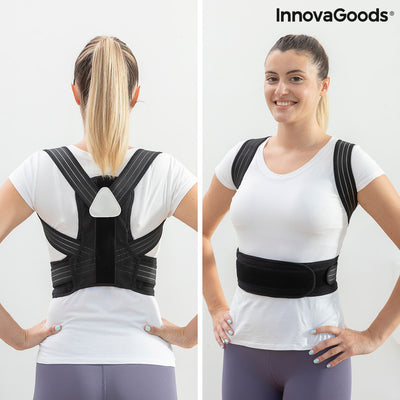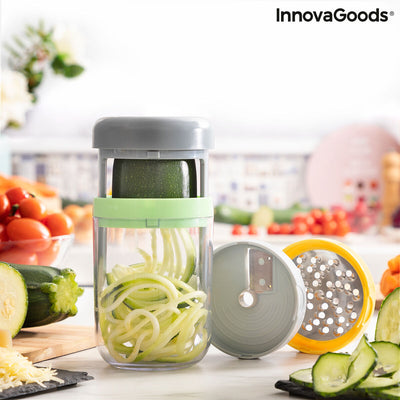How Can You Use HIIT Workout to Boost Your Energy?
Sedentary lifestyles and remote work increasingly force us to look for ways to stay active and energized, even with our busiest schedules. Still, WHO reports almost 28% of people worldwide don't get enough physical activity weekly. Are you one of them? Then it's time to change your workout routine for the better!
But wait, what if you don't have enough time to exercise? Household chores, work assignments, and personal issues may leave you too knackered to even think about workouts. However, we got this covered for you — HIIT workout is an excellent solution to get your daily workout dose even when you're super busy. So dive in to learn more about its benefits, discover the best HIIT exercises, and how you can do them most effectively!
What is a HIIT workout?
In a nutshell, HIIT or High-intensity interval training is a short session of intense cardio exercises, which you should alternate with low-intense exercises. The primary purpose of this training is to maximize your muscles' load and deprive them of oxygen to have a fast and efficient workout in less time. And low-intense exercises are necessary to clear off the lactic acid from your blood and begin another HIIT bout.

If you don't have time for the gym or want to power up before work, there's nothing better than HIIT. Even if you have only 10 or 5 minutes, you can still adjust this training to your timings and enjoy all workout benefits as if you spent an hour in the gym. So now, let's learn more about HIIT benefits to your energy and health.
Benefits of HIIT workout
Undoubtedly, any exercises are beneficial for your body and health. Still, HIIT is more than a simple workout session. A study has shown that these exercises provide the same energy metabolism boost and brain oxygenation as long endurance training. That means you don't need to spend hours running or performing complex exercises. Only one HIIT session per day (that can last no longer than 30 minutes) will give you desired results. That's why you should choose HIIT:
HIIT increases your stamina
Pushing your body to the limits has a decent perk for your stamina — it helps you stay more energized and active throughout the day. However, Japanese National Institute of Fitness and Sports experiment results have proven that exercising with a moderate intensity won't change your anaerobic capacity.
In other words, no matter how much endurance exercise you do, it still won't help you exercise significantly longer. In turn, Japanese scientists claim that exhaustive intermittent workouts or HIIT increase your anaerobic capacity by 28%.
HIIT reduces stress and lowers the risks of getting a depression
When your head is about to explode, and you don't feel like surviving another stressful day, don't grab the tranquil first — we have a better solution for you. HIIT workouts are an excellent way to reduce stress and depression symptoms. In fact, any physical activity has a calming effect on your nerves since your body produces endorphins and enhances your blood flow during workouts.

But as for the research, high intense exercises are doing a much more outstanding job in relieving depression symptoms than moderate ones. Besides, are you among those 70% of professionals who experience work-related stress daily? We have good news for you, as HIIT workouts may increase your job satisfaction by 19%.
HIIT promotes your heart health and reduces blood pressure
Many people think extreme workouts may become harmful to the heart. The research claims that hard physical loads lead to heart scarring and heart walls thickening. However, nothing mentioned above relates to the HIIT.
Firstly, it can reduce your blood sugar level and improve your insulin resistance. What's more, it can improve your cardiac function and reduce high blood pressure. Survey says performing regular HIIT workouts may lower your risks of getting a heart stroke and heart attack by up to 30%.
HIIT improves your brain function
HIIT workouts are more than just exercise to grow your muscles. It can also change how well your brain works. When you have numerous assignments at work, meeting with clients, and personal issues, you can't just keep everything in mind. And forgetting urgent deadlines or missing meetings can negatively affect your career growth. That's where HIIT can save the day!
Journal of Cognitive Neuroscience study has found that intense and short exercises can boost your memory performance and protect your brain cells from destruction. Meanwhile, another research claims HIIT has benefits for your learning skills, helping you memorize more information for a more extended period. So if you want to keep on track towards your career goals, try HIIT workouts and see the difference in your mental performance.
Now you should be curious, which HIIT workouts are the best for you when you're limited in time but still want to experience all the benefits. So take a look at their list and choose which one suits your schedule the best.
The most effective HIIT workouts you can perform with no equipment
You can find numerous HIIT examples with different duration and complexity levels. However, any of these exercises will be equally beneficial to your heart health and energy level, that's why you can choose them up to your liking.

Tabata (4-minute session)
This workout includes extremely intense and short exercises to get more benefits in less time. For example, when performing Tabata, you should train for 20 seconds and rest for 10 seconds after each interval, performing eight rounds. Repeat one exercise during all rounds or split them into two activities.
When you complete the first session, repeat it as much as you need — four sessions in a row will be the best option. Finally, choose Tabata if you have no time but still want to get your daily cardio dose and clear your head.
How your 8-minute Tabata workout can look like:
First session:
- Squats for 20 seconds
- Push-ups for 20 seconds
- Repeat each round once more
Second session:
- Burpees for 20 seconds
- Reverse lunges for 20 seconds
- Repeat each round once more
Ladder (7-minute session)
Descending or ascending ladder workout is another type of HIIT when you gradually decrease or increase exercise intervals. This HIIT workout is pretty effective and stimulating, as you feel more confident after moving to the next round.

When performing a descending ladder, you start with the most extended interval and end with the shortest. At the same time, in the second case, everything happens the other way around. The rest time is 15 seconds after each interval. You can mix different exercises during this workout to distribute the load across all muscles.
How your 14-minute Ladder workout can look like:
First session:
- Push-ups for 50 seconds
- Jump Squats for 40 seconds
- Push-ups for 30 seconds
- Jump Squats for 20 seconds
- Push-ups for 10 seconds
Second session:
- Star jump for 10 seconds
- Leg raise for 20 seconds
- Star jump for 30 seconds
- Leg raise for 40 seconds
- Star jump for 50 seconds
EMOM (1-minute session)
The main idea of EMOM or "Every minute on minute" HIIT workout is to complete required reps in less than a minute and to take a breath in the remaining time. This exercise is an excellent motivation to perform better, so you'll have more time to rest until the minute is up.

Plus, it's fully adjustable to your strengths: you can choose the number of sessions and reps to perform within every minute. This exercise is perfect as metabolic conditioning training to increase your stamina and boost the energy level. However, if you've just started HIIT, this workout may be too hard for you since you'll not get enough rest between sessions.
How your 10-minute EMOM workout can look like:
- 10 Squats for 1 minute
- 15 Lunges for 1 minute
- 10 Plank rows for 1 minute
- 20 Star jumps for 1 minute
- 10 Burpees for 1 minute
- Repeat each session once more
Short sprint (30-minute session)
This HIIT exercise may last longer than other workouts but still takes less time than regular running or gym training. Furthermore, it gives you an instant burst of energy. HIIT also increases your VO2max (maximum amount of oxygen you can spend when exercising) up to 13%.
When performing short sprints, firstly, you need to warm up for 10 minutes. Then you can start a 30-second sprint with maximum speed your body can develop. Repeat these sprints four times with the 4,5 minutes rest periods between them.

How your 30-minute Short sprint workout can look like:
- Warm-up with stretching and moderate-speed running for 10 minutes
- Short sprint for 30 seconds
- 4,5 minutes of low-speed running or walking
- Repeat two last steps three times more
One-to-one (1-minute session)
If you're only thinking about starting HIIT, this workout technique is the best option as it's not so harsh and intense as others. When performing One-to-one, you should work out at high speed for 30 seconds and then rest for 30 seconds. Thus, your body has enough time to rest, and you won't get too overwhelmed by the exercise tempo. Besides, it would be easier for you to start with this workout since you don't need to count reps or set different timers.
How your 10-minute one-to-one workout can look like:
- Bear crawls for 30 seconds
- Single-leg burpees for 30 seconds
- Crunches for 30 seconds
- Sit-ups for 30 seconds
- High knees for 30 seconds
- Repeat each round once more
Neither of these HIIT workouts won't take much of your time and still deliver even more benefits than a regular moderate-intensity exercise. Therefore, nothing stops you from starting today! And with our practical tips, you'll perform HIIT workouts as a real pro.
Tips on how to start a HIIT workout as a pro:
- Find your "power time." Some people find it easier to work out in the morning, while others like to work out in the afternoon. Adjust your HIIT session to your internal clocks, and you'll find it easier to integrate exercises into your schedule.
- Start small. We keep saying — begin with the small changes and easy exercises. It's too easy to scare off your motivation with strenuous activities or a speedy tempo. If you want to make HIIT your habit, start with the simplest workout and gradually add more loads.
- Warm-up. A decent warm-up before physical exercises supplies your muscles with oxygen, minimizes your heart strain, and increases your body temperature. Besides, your tissues will also be ready for an intense workout, which will allow you to avoid injuries and sprains.
- Take "workout day-offs." Consistency is necessary on any workouts. Still, exercising every day may worsen your muscle soreness, decrease your overall energy level, and even lead to injuries. That's why three times a week is an optimal frequency of HIIT.
- Try a "talk test." If you're wondering, are your HIIT workouts intense enough, there's an easy way to test it. Try to talk when performing reps. If you can say a few words without completely losing your breath, then you should work out a bit harder.
- Hydrate and fuel your body. You lose many calories and liquids during a high-intensity workout, that's why it's so essential to drink plenty of water before it and take some fast-acting carbs like an energy bar or a sports drink. When you're done exercising, get some complex carbs and proteins to refill your energy balance and support muscles.
- Alternate workout types. To make your HIIT routine variable and fun, try different workouts during the week. For example, you can try a One-to-one on Monday, make a Short sprint on Wednesday, and finish your hardworking week with a few Tabata sessions.
- Listen to your body. High-intensity training is beneficial for your heart unless you exceed your limits. If you suddenly feel dizziness, nausea, or hard throbbing in your temples, stop the exercises and give yourself some time to recover.
- Distribute the load evenly. To get the maximum benefit for your body shape, try to choose different exercises every time. After doing the exercises for your legs and buttocks, move on to pumping the back muscles and arms. Finish with a fortifying exercise like a plank.
- Set goals. There's nothing better for your workout motivation than the goals you've completed! That's why it's essential to measure your progress, set specific weekly goals, and reward yourself for achieving them.
Resources:
- Why You Shouldn't Be Working Out Every Day (2019)
- Warm Up, Cool Down (2014)
- HIIT Ratios And How To Use Them (2021)
- Short Sprint Interval Training (2013)
- What Are Emom Workouts? Give It A Try With This 20-Minute Routine (2020)
- Hardcore HIIT Ladder Workout (2020)
- What Is Tabata Training? (2020)
- Acute High-Intensity Interval Exercise Induces Greater Levels Of Serum Brain-Derived Neurotrophic Factor In Obese Individuals (2018)
- The Effects Of Physical Exercise And Cognitive Training On Memory And Neurotrophic Factors (2017)
- HIIT Workouts: Just 15 Minutes Of Intense Activity Can Improve Heart Health (2021)
- Fitness And Exercisehigh Intensity Interval Training (HIIT) (2019)
- Heart Risks Associated With Extreme Exercise (2020)
- How Your Type Of Workout Can Cut Stress And Make You Love Your Job Again (2019)
- Highlights: Workplace Stress & Anxiety Disorders Survey (2020)
- Effects Of High-Intensity Interval Training And Moderate-Intensity Training On Stress, Depression, Anxiety, And Resilience In Healthy Adults During Coronavirus Disease 2019 Confinement: A Randomized Controlled Trial (2021)
- Exercise And Stress: Get Moving To Manage Stress (2020)
- Anaerobic Capacity (2020)
- Effects Of Moderate-Intensity Endurance And High-Intensity Intermittent Training On Anaerobic Capacity And Vo2max (1996)
- High Intensity Interval Training (HIIT) Vs. Continuous Endurance Training: Which Is Better? (2015)
- High Intensity Interval Training (2018)
- Worldwide Trends In Insufficient Physical Activity From 2001 To 2016: A Pooled Analysis Of 358 Population-Based Surveys With 19 Million Participants (2018)








